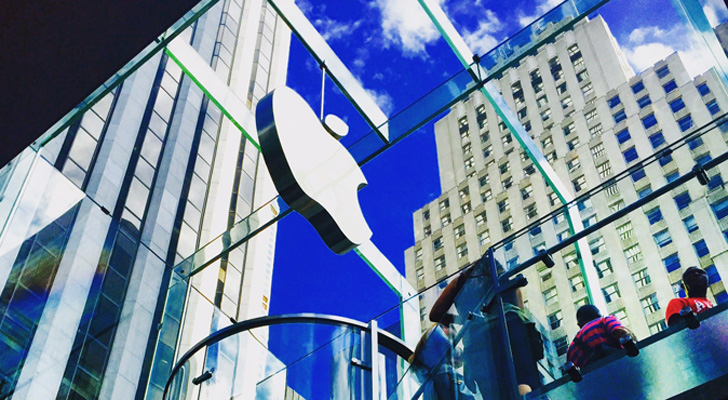With roughly a $900 billion market cap, Apple Inc. (NASDAQ:AAPL) is too large to resist the market’s gravitational pull. It’s like General Motors Corp. (NYSE:GM) was in the 1950s — the interests of the company, market and country nearly indistinguishable.
The shares’ movements increasingly match those of the NASDAQ Composite (INDEXNASDAQ:IXIC), and, in 2018, the two have become mirror images. Through March 1, the NASDAQ was up 4.01%, Apple stock was up 3.41%. With the NASDAQ Composite due for a drop of 1.27% in pre-market trading March 2, Apple stock was down 1%.
This should give traders confidence about the stock’s direction and investors clues as to buying opportunities. If the market is down, buy Apple stock. If it’s up, sell or just hold Apple stock. What’s happening at Apple will have less to do with how the stock is performing than what is happening with the market.
But if you want to know what’s happening with Apple, quite a lot.
Acting Like a Cloud Czar
Through most of this decade, Apple was aloof and separate from the “Cloud Czars” like Alphabet Inc. (NASDAQ:GOOGL), Amazon.Com Inc. (NASDAQ:AMZN) and Microsoft Corp. (NASDAQ:MSFT). It was a product company, tied to the seasonal product cycle.
That is changing, as services represent a bigger share of the business. During the most recent quarter, services like iCloud and Apple Music represented 16% of revenue — up from 13% a year earlier. Services and “other products” like the Apple Watch are now the fastest-growing parts of the business, with top lines growing around 35% per year.
This makes Apple more directly competitive with the other Cloud Czars than ever before. The HomePod, for instance, entered a market that Amazon’s Alexa dominates and Google’s Google Home is gunning for.
Colliding in Health Care
Google, Apple and Amazon are also on a collision course in health care.
Google’s Verily unit wants to do population studies through its Project Baseline, which will monitor 10,000 people over four years to deliver a “baseline” of good health.
Amazon recently announced a health care initiative with Berkshire Hathaway Inc. (NYSE:BRK.A
) and JP Morgan Chase & Co. (NYSE:JPM), aimed at cutting its own costs, then building a business.
Apple is building its own clinics for Apple employees and the Apple Watch can now detect early signs of diabetes with 85% accuracy.
This is the Holy Grail for wearables, not just monitoring fitness, but wellness. A wearable that can accurately detect a coming heart attack, and that can monitor blood sugar levels, is aimed directly at 75% of the U.S. health care budget. The idea is that if Apple, or anyone else, can prove better monitoring improves outcomes, insurers will start paying for the devices and back-end services.
It’s what I called the “killer app” when I began writing about what’s now called the Internet of Things over 15 years ago — and it’s almost here.
Bottom Line on Apple Stock
Analysts, however, are still focusing on the trees in the Apple forest, not the forest itself.
They ask where it’s keeping its iCloud keys, who might be supplying its parts, or detail rumors about the next iPhone.
It’s more important to look at the broader market to see where Apple might go, buying and selling Apple stock, and options, in line with the market’s own behavior rather than that of the company.
Apple remains a quality stock, as our Vince Martin writes, because the market remains a good place to keep money. Apple’s plans to repatriate cash and increase capital spending are in line with what the other Cloud Czars have been doing.
Thus, the answer to Apple becomes easier to track. How’s the market doing? That’s probably how Apple’s doing. What’s good for Tim Cook’s Apple is good for the USA.
Dana Blankenhorn is a financial and technology journalist. He is the author of the historical mystery romance The Reluctant Detective Travels in Time, available now at the Amazon Kindle store. Write him at danablankenhorn@gmail.com or follow him on Twitter at @danablankenhorn. As of this writing he owned shares in MSFT and AMZN.

